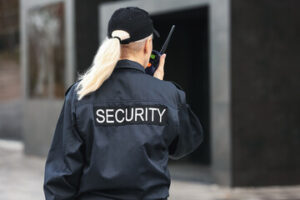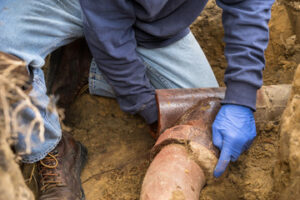If you’ve been injured in a truck accident, an experienced Salt Lake City Top Truck Accident Lawyer can help. They’ll identify all potentially liable parties and build a strong case to secure the compensation you deserve. They can also collect evidence, including police reports, black box data, eyewitness statements, and medical records.

They’ll determine whether the truck driver owed you a duty of care and that their oversight caused your injuries and losses. They’ll also calculate your damages.
Truck Accident Lawyers help clients establish liability and pursue fair compensation for their losses. They have a deep understanding of federal laws and regulations that govern the industry, including safety standards and operational rules. They also have a comprehensive knowledge of relevant state laws and precedent cases to support their case. They use their skills in negotiation, advocacy, and a meticulous approach to evidence-gathering to build strong cases for their clients and achieve favorable outcomes.
Commercial trucks differ from passenger cars in many ways, and these differences can lead to serious accidents. These vehicles can be 20 times larger than passenger cars, and they are subject to stricter safety laws. These regulations govern everything from driver qualifications and maintenance requirements to logbooks and cargo loading. If a trucking company fails to adhere to these regulations, it can result in a dangerous or deadly crash. A truck accident attorney can investigate the crash to determine the underlying cause and identify liable parties.
A truck accident attorney will start by requesting records from the involved parties, such as police reports, black box data, eyewitness statements, and repair estimates. They may also hire experts to evaluate the scene of the accident and analyze evidence. They will then begin to prepare and file legal documents with the court, such as summons and complaints. They will also review the insurance policies of each party to identify coverage and exclusions.
Then, they will negotiate with the insurance companies on behalf of their client, seeking compensation for medical bills, property damage, lost wages, and pain and suffering. They will also assist in filing for wrongful death compensation if the victim was killed in the accident.
The right truck accident lawyer will work tirelessly to ensure that their client receives fair compensation from the liable parties. They will provide regular updates on the status of their claim, and they will be available to answer any questions or concerns that their client may have. Choosing the right attorney will require careful consideration, so it is important to consult with several lawyers before making a decision. Evaluate each attorney’s availability, communication skills, and track record of successful outcomes.
Experienced negotiators
A truck accident lawyer with years of experience can bring a deep knowledge of local, state and federal laws, regulations and insurance company practices. This helps them build a case that can stand up to the insurer’s scrutiny and result in a fair compensation.
They will also be able to negotiate with the insurance company on your behalf. This is a big part of getting the compensation you need to cover your losses including medical bills, lost wages and property damage. Insurance companies will often try to deny your claim or lowball your settlement. A skilled attorney knows how to navigate these tactics and will fight hard for you.
Once they have collected all the relevant evidence, your Truck Accident Lawyer will prepare a demand letter to send to the at-fault party’s or their insurance company. The letter will detail all the damages you are claiming including medical expenses, future treatments, loss of income, and property damage. They will also detail any non-economic damages you are claiming such as pain and suffering.
If a reasonable settlement is not reached during negotiations, your truck accident lawyer will file a lawsuit against the at-fault party. They will then begin preparing your case as though it will go to trial, as this will maximize your chances of winning a court-awarded settlement.
Your lawyer will manage all communications with your service providers, experts and insurance companies throughout the litigation process. This will include arranging and attending depositions (formal, recorded interviews) and submitting interrogatories (written questions to be answered under oath). They can also represent you in mediation and arbitration proceedings when necessary. They will take into consideration how this case might affect your life, personal relationships and career and will strive to get you the best possible outcome. This is why it is important to choose a lawyer with the right amount of caseload so they can dedicate the time and resources to your claim. It is also crucial that your Truck Accident Lawyer has extensive experience handling large commercial trucking cases and a proven track record of success.
Strong evidence collection skills
A successful truck accident claim requires a comprehensive case file, including medical records, expert testimony, and other corroborating evidence. In addition, the victim’s damages must be thoroughly assessed to arrive at a fair settlement demand. This takes into account the extent of the victim’s injuries, their impact on the victim’s life, and the future costs associated with their recovery and rehabilitation.
A skilled truck accident lawyer will take the lead in preserving evidence, ensuring that nothing crucial slips through the cracks. This includes sending spoliation letters to any parties who may have information related to the crash, requesting that they not destroy or dispose of any relevant documents. It also involves visiting the accident scene and identifying potential sources of evidence, including traffic cameras, surveillance footage, and dashcam recordings.
Photographic and video evidence captures the accident scene in real-time, offering an objective, unfavorable view of what actually took place. Witness statements offer valuable third-party perspectives, and medical records provide a clear link between the injuries and the accident. Electronic data from the truck’s onboard systems, including maintenance and inspection records, cargo information, driver logs, communication records, and more can also prove helpful.
Reconstruction of the accident scene can help determine what transpired leading up to the collision, while examining vehicle maintenance and inspection records can identify violations of federal regulations or industry standards. In addition, highlighting discrepancies in the truck driver’s log can highlight driving fatigue as a contributing factor, while demonstrating negligent oversight on the part of the trucking company or maintenance contractors can also prove useful.
In addition, the attorney must compile all of the client’s relevant financial documentation, including hospital invoices, X-rays, MRI scans, and prescriptions. They will then use this documentation to demonstrate the accident’s financial impact, establishing a clear connection between the accident and the victim’s injuries and expenses.
Ability to get accurate estimates of your future costs
A truck accident lawyer’s ability to evaluate the damages incurred by their clients will play a significant role in negotiating a fair settlement. They will provide you with accurate estimates of the costs associated with your physical and emotional recovery, such as property damage, medical expenses, loss of wages, pain and suffering, and more. Their knowledge of the trucking industry and legal regulations will help them calculate the total cost of your accident, including future losses you can expect to incur.
One of the biggest challenges in truck accidents is establishing liability. Unlike passenger vehicles, trucks are driven by individuals who work for companies that own and operate the vehicle, and multiple entities may share responsibility for a crash. In some cases, determining who is responsible requires an investigation of the crash site, review of driver logs, inspection of the truck, and interviewing witnesses.
The best truck accident lawyers have experience identifying the causes of these crashes and holding these parties accountable. They understand that large trucking companies and their insurers will do everything they can to avoid paying compensation to injured victims.
When choosing a truck accident lawyer, look for an attorney with a low or moderate caseload. This will ensure that they have the energy and resources necessary to prepare your case for trial. They should also be able to answer your questions about the legal process, including filing deadlines and court proceedings.
Once they have gathered all of the evidence, your attorney will determine the responsible party and the amount of compensation you should receive for your injuries. They will then send a demand letter to the at-fault party’s insurance company outlining your accident details and asking for a specific amount of money for your damages. If negotiations do not yield a suitable settlement, your truck accident lawyer will file a lawsuit on your behalf and represent you in court. They will be prepared to argue your case before a judge and jury, ensuring you receive the maximum compensation possible. In addition to their legal skills, the best truck accident lawyers should be empathetic and compassionate towards their clients. This is important because of the emotional trauma and stress that often accompanies a truck accident.

